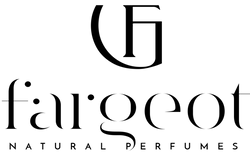What you need to know about phthalates

Credit photo: Universal Eye on Unsplash
This is the second of our series about the different nasties you can find in mainstream perfumes and other cosmetics and we are now looking at phthalates.
What are phthalates?
Besides being hard to spell, phthalates are mainly used in plastics to increase their flexibility and durability. In cosmetics, phthalates can be used as solvents or binding agents. More particularly in perfumes, phthalates are used as a fixative to prolong the scent of the perfume onto the skin.
Phthalates are everywhere around us; from food to cosmetics to containers, detergents, adhesives, building materials and more.
Why do phthalates have a reputation as nasties?
What is important to know is that phthalates are a group of chemicals rather than a single one, some types being safer than others. For example, three of them (BBP, DBP and DEHP) are already banned from being used in products meant for children under 3.
Several studies have linked phthalates to reproductive and genital defects. Phthalates are known as endocrine disruptors (EDC), meaning that they can mimic or block hormones involved in sexual development and sexual health for both men and women. Adults are at risk though the population the most vulnerable to phthalates is growing children, including in utero as phthalates cross the placenta.
Other studies have also linked phthalates to eye and skin irritation as well as cancer.
It is thought that the majority of our phthalate exposure is through food and drinks as they absorb the chemical as they are produced and packaged. Phthalates may also be inhaled from perfumes or cleaning products. Finally, phthalates can be absorbed by the skin from certain cosmetics, including perfumes.
What is the alternative to phthalates?
Phthalates are so present in our day-to-day they are hard to avoid.
While it should be an ongoing commitment to reduce plastic use, most of us still need a few items made out of plastic. The two most popular alternatives to phthalates as a plasticisers are called DEHT and DINCH. Both have a reduced toxicity compared to phthalates.
It is important to take informed steps if you wish to reduce your exposure to phthalates:
- Some products will be labeled “Phthalates-free” but not all of them. Also, phthalates may not be listed as such on a label. It is therefore crucial to know the different acronyms they can be listed under such as: BBP, DBP, DEHP, DEP, DiDP, DiNP, DnHP, DnOP etc. In terms of perfumes, this can be tricky as some perfumes brands do not disclose their ingredients, claiming to protect the Intellectual Property that goes in creating a signature scent. Brands such as Fargeot Natural Perfumes take the opposite stance, not only by being phthalates-free but also by listing all their ingredients so consumers can make informed decisions as to what they inhale and what goes onto their sins.
- Reheating food in a phthalates-loaded container can be ground for an important transmission of phthalates to the food. Only use “microwave safe” and phthalates-free containers
- Be mindful of your diet. Meat and dairy can be high in phthalates as the animals themselves may have been exposed to high levels of phthalates. Fast-food are also to be limited due to being packaged in containers that can contain phthalates
- Pick caring brands. Some cosmetic brands produce high-quality products with an emphasis on being chemical-free, including phthalates-free.
In terms of perfumes, we, Fargeot Natural Perfumes, are proud to offer an all-natural alternative to perfumes, including long-lasting signature scents without using phthalates.

